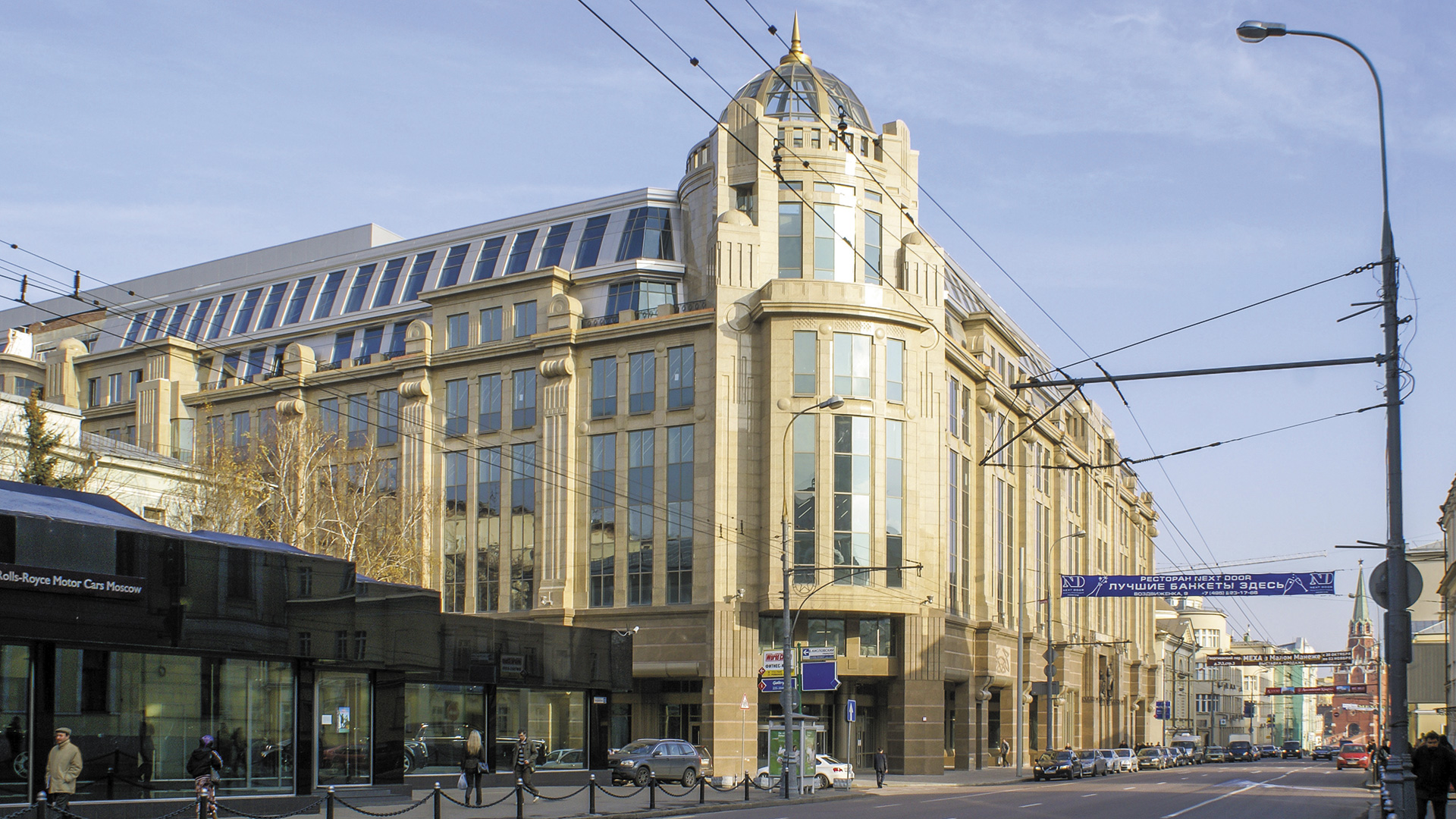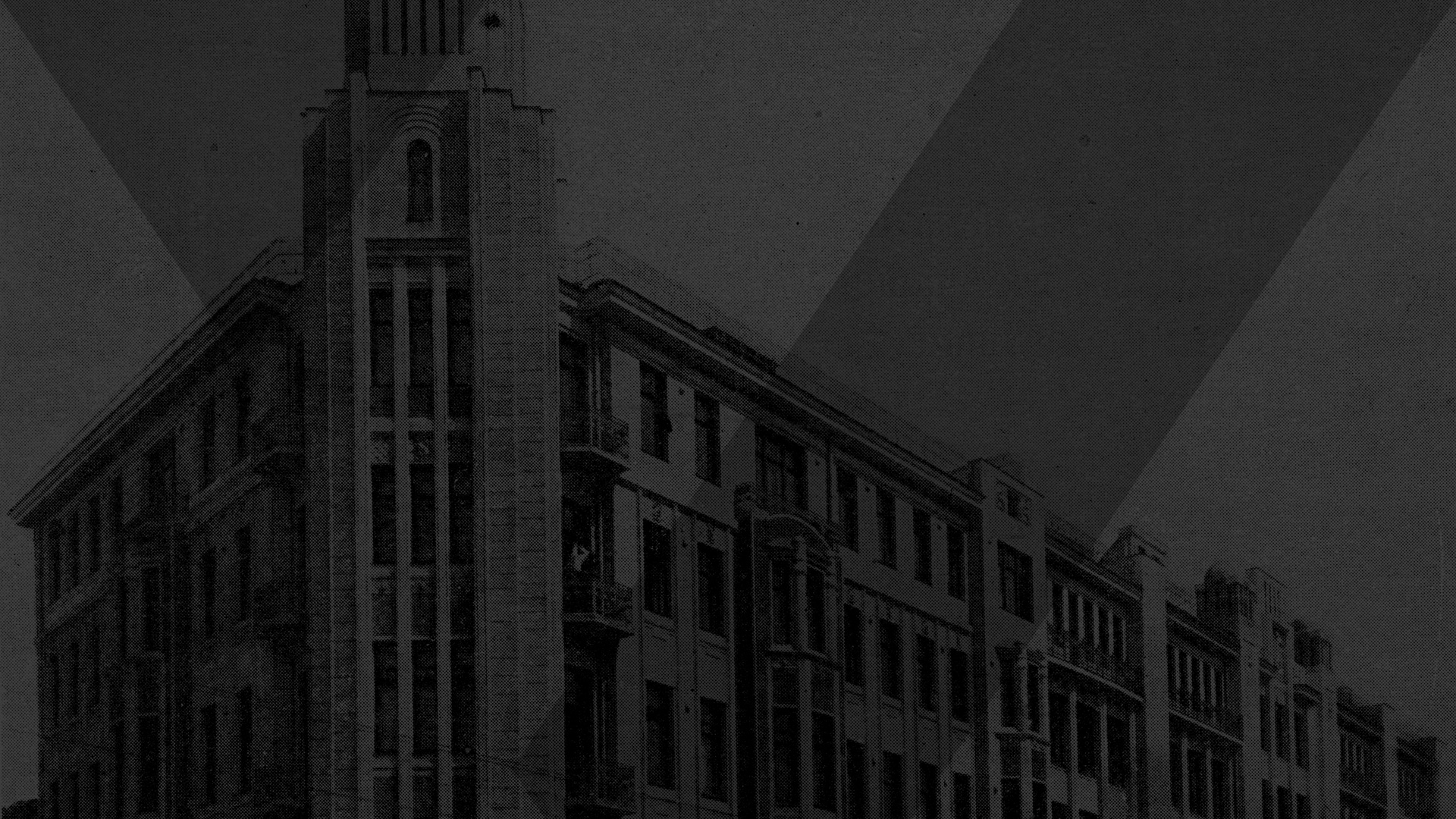
Vozdvizhenka Street
Back in the 13-14th century the street was known as “Volotsk road”, part of a trade route connecting Moscow and Veliky Novgorod. In the 17th century, Russian Tsar Alexei Mikhailovich issued a decree giving the place a new name, Smolenskaya Street. This name, however, did not last long — the Muscovites soon started to call the street after the local Krestovozdvizhensky Monastery (“the Holy Cross Monastery”).
By the middle of the 16th century through to 19th century the street was occupied by Moscow's nobles close to the tsar. The Streshnevs, the Morozovs, the Naryshkins, the Miloslavskys, and Leo Tolstoy’s grandfather prince Nikolai Volkonsky. Nikolai Volkonsky’s home on Vozdvizhenka is known to have later become the real-life model for Pierre Bezukhov’s place in ‘War and Peace’.
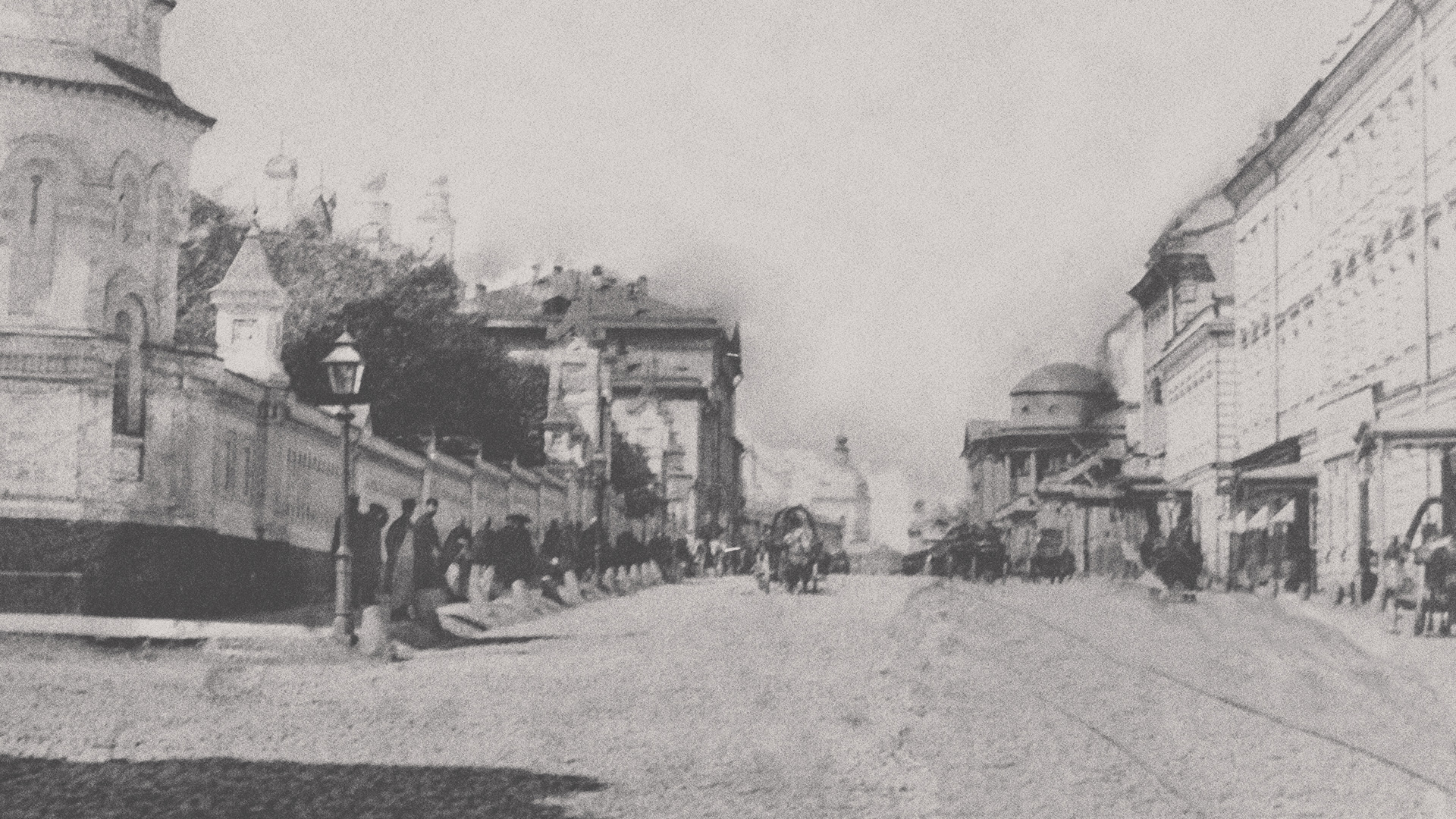
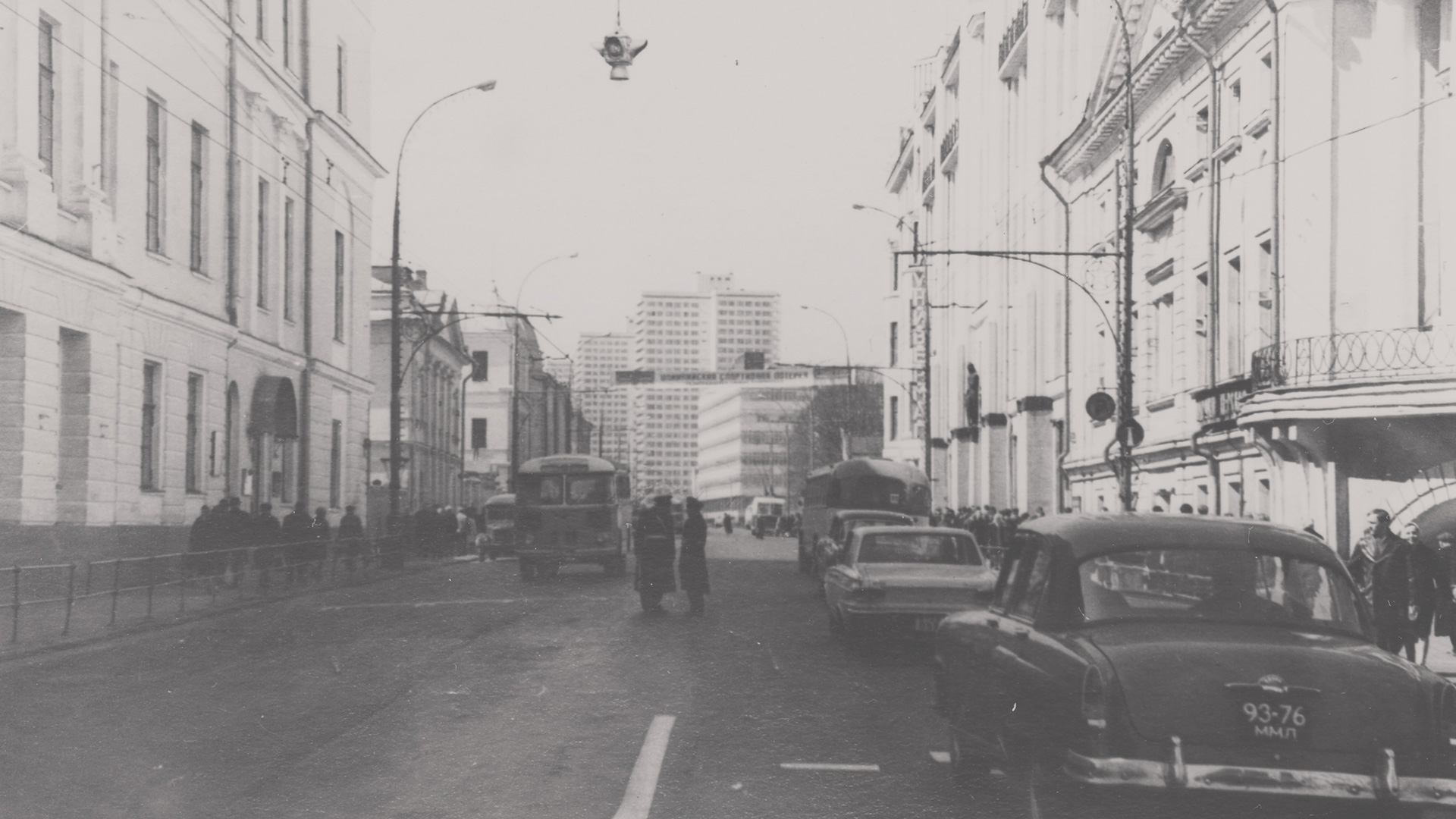
In the second half of the 19th century the street was widened and paved with cobblestones. Horsecars and, later trams were used as local public transport.
By the end of the 19th century, the area became a large construction site with multiple Art Nouveau buildings erected along its’ length. One of the new buildings — Vozdvizhenka,10 — was envisioned by local architect Sergey Zalessky.
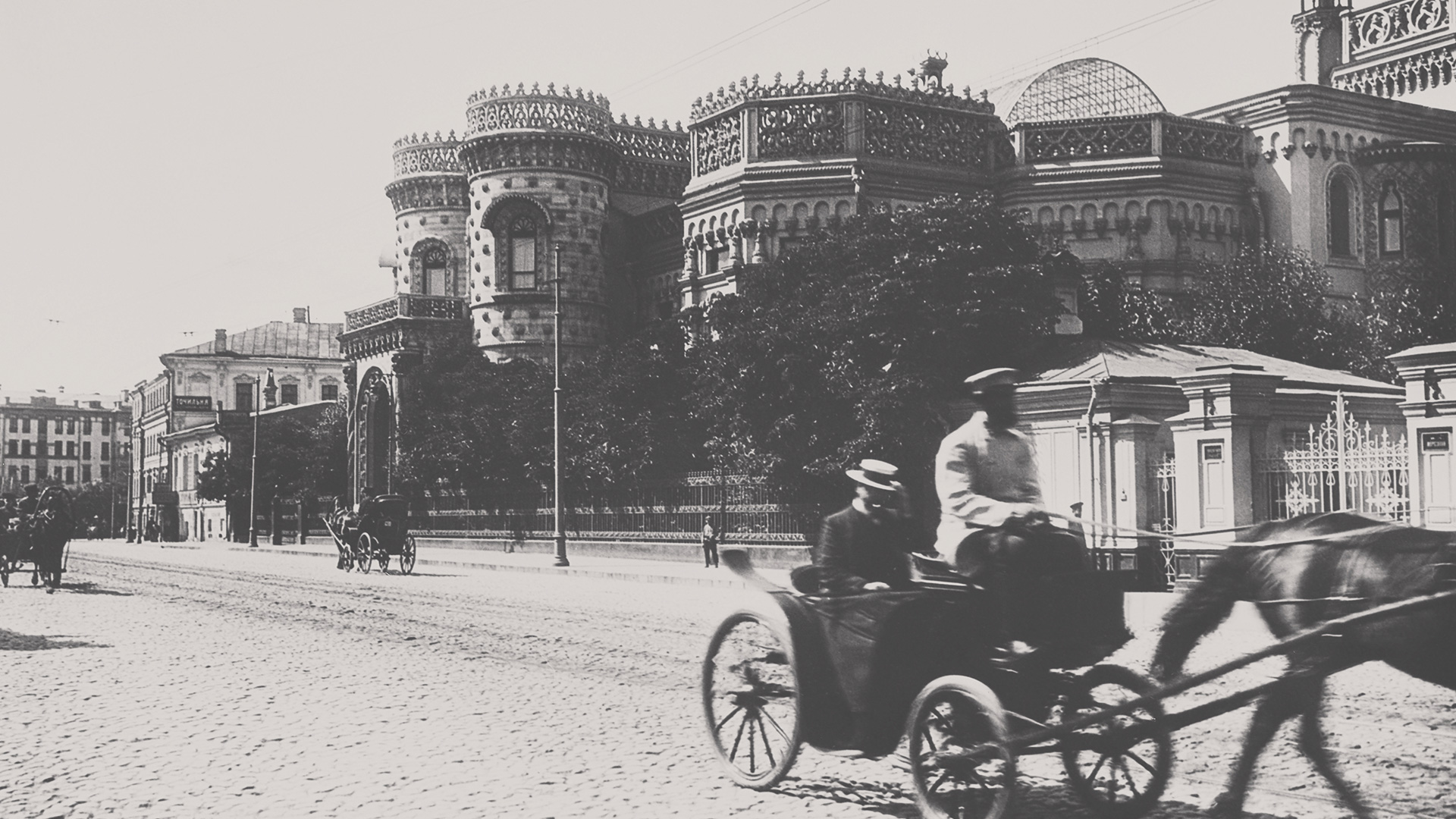
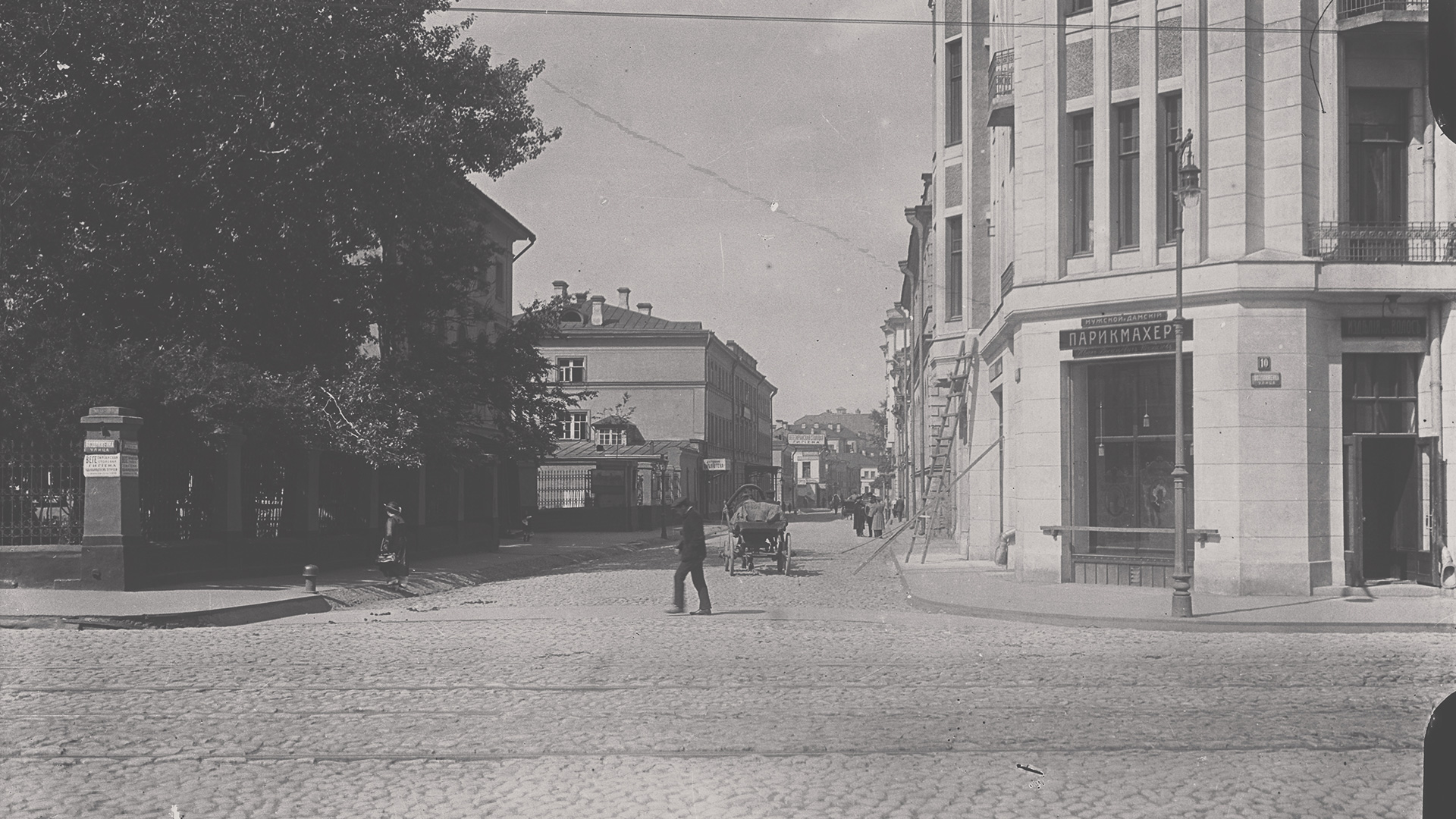
Vozdvizhenka, 10 — was envisioned and built by local architect Sergey Zalessky.
The Literary Club and the Economic Society of Officers
By the end of the 19th century, Vozdvizhenka 10 was owned by gold miner Ivan Bazilevsky. His name was laid out in pure gold on a board at the entrance.
Over time Bazilevsky built a separate three-story building to lease out, while the main building could house artists. In 1899 the main building became home for the Literary Club, one of the first clubs of Moscow intelligentsia.
Writer Anton Chekhov, theatre director Konstantin Stanislavsky and actress Maria Ermolova were among those who proposed establishing the club. Singer Fyodor Chaliapin, artists Valentin Serov, Victor Vasnetsov and Konstantin Korovin became frequent visitors, along with modern writers and poets gathering for literary evenings.
In 1905, the Literary Club moved to Bolshaya Dmitrovka nearby. The Vozdvizhenka building and the adjacent territory with apartment buildings were transferred to the Economic Society of Officers, a consumer cooperative society for acting officers, military doctors, military officials, representatives of the military clergy and widows.
In 1910, the society announced a competitive tender for developing its territory. The architect Sergey Zalessky won the competition. His project was awarded by the Moscow City Council, and after designs were approved, in 1912 the construction of Voentorg began.
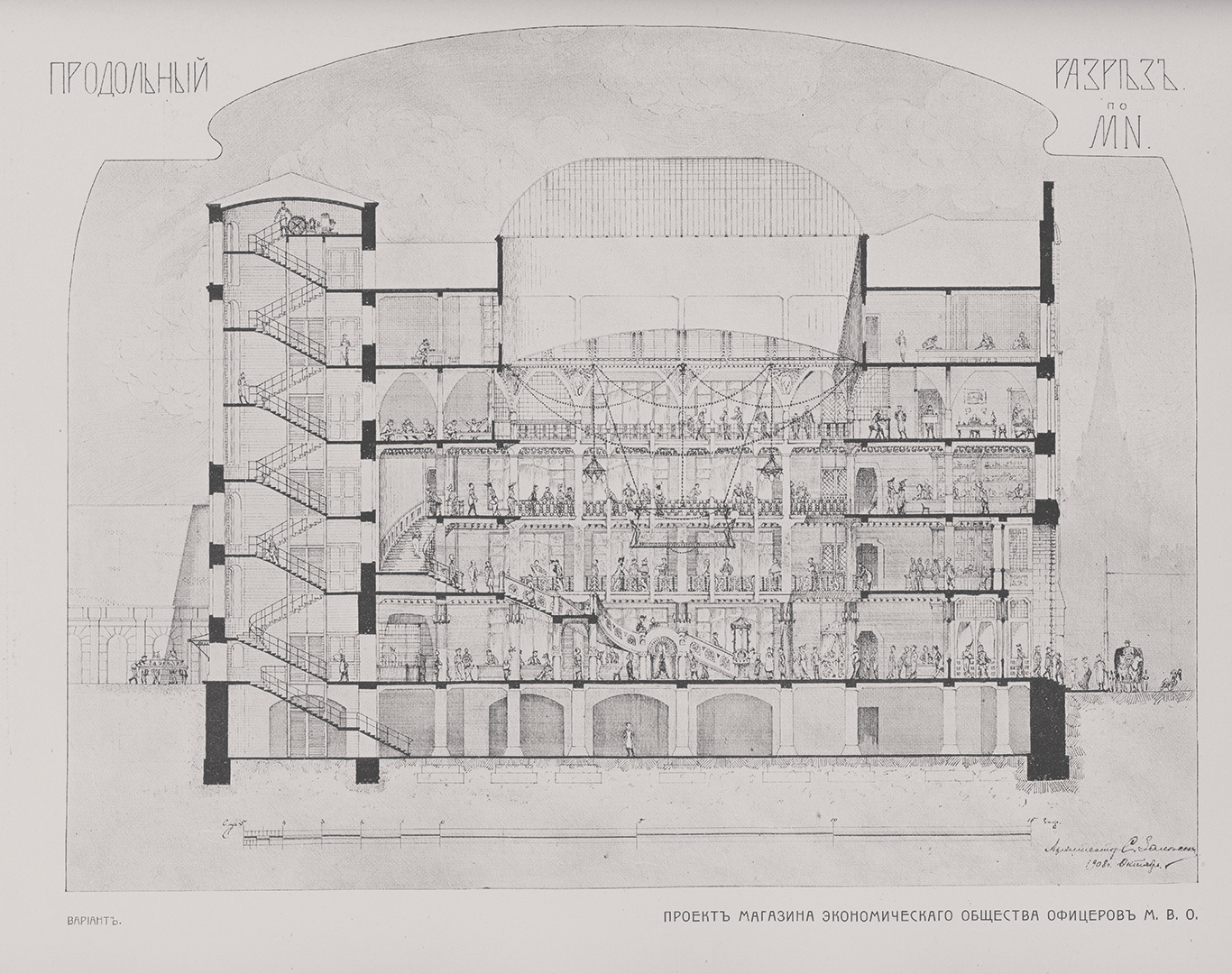
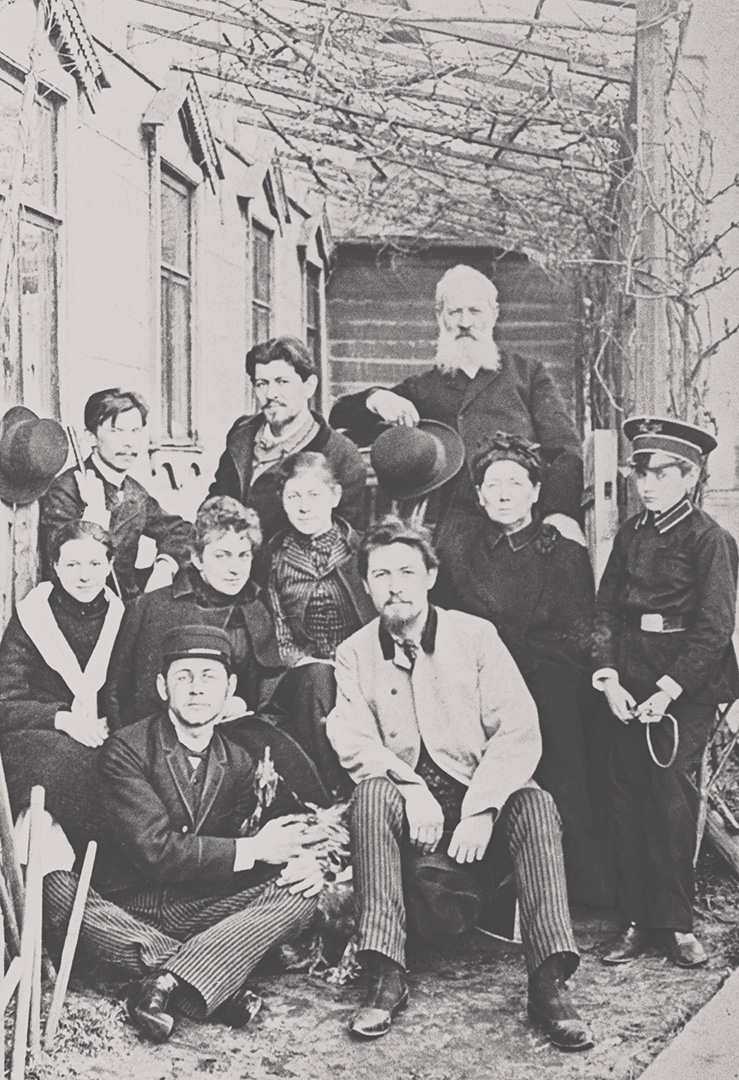
Sergey Zalessky
Sergey Zalessky, the man behind Voentorg’s initial project, became an architect after graduating from Moscow School of Painting, Sculpture and Architecture. Little is actually known about his biography. After graduation Zalessky worked as a technician in the Construction Department of the Moscow City Government. In 1906 he became an architect at the Economic Society of Officers.
Zalessky built a school in Pleteshkovsky Lane and several apartment buildings in Moscow, as well as constructing churches and chapels. Lyamin’s apartment house and the Moscow Credit Society building were constructed under his leadership and received first prizes in Moscow’s architectural competitions. Zalessky was referred to as a prominent modernist architect of his time. His fascination with this style was quite evident in his Voentorg project, which was one of his last well known projects. The fate of the architect after the 1917 revolution remains unknown.
1912 - The construction of Voentorg, the country's main military department store, is underway.
The opening of Voentorg
The construction of Voentorg was relatively fast, with the building completed in 1913. At the time, the building cost reached one million and twenty seven thousand rubles. The new building included a store covering the needs of the military and officers, and an apartment block.
The architectural magazine ‘Zodchiy’ described the new building in one of its issues in 1916. “The store is spread across some six levels; in the basement, which covers the area of the entire building and part of the yard, there is a transport department, a warehouse, refrigerators and a wine department; the ground floor, the first and second floors are reserved for merchants; on the third floor, there is an office and several workshops; fourth floor is entirely reserved for workshops; finally, the fifth floor, the attic, is intended for warehouses.
The public was welcomed in a building buffet and store staff had access to canteens.
“The buffet’s finish is made of American (Manila) walnut; there are stucco moldings with paintings on the ceiling; there is a drawing room by the buffet with its decor hinting to the Louis XV era, all furnished with antique furniture”, continued ‘Zodchiy’ in its article.
A lot of new technologies were used in the Voentorg building at that time: an icemaker, a cooling system for storing goods, ventilation, electric lighting, passenger and service lifts. Even landline telephones were installed there, free for the shop visitors to use.
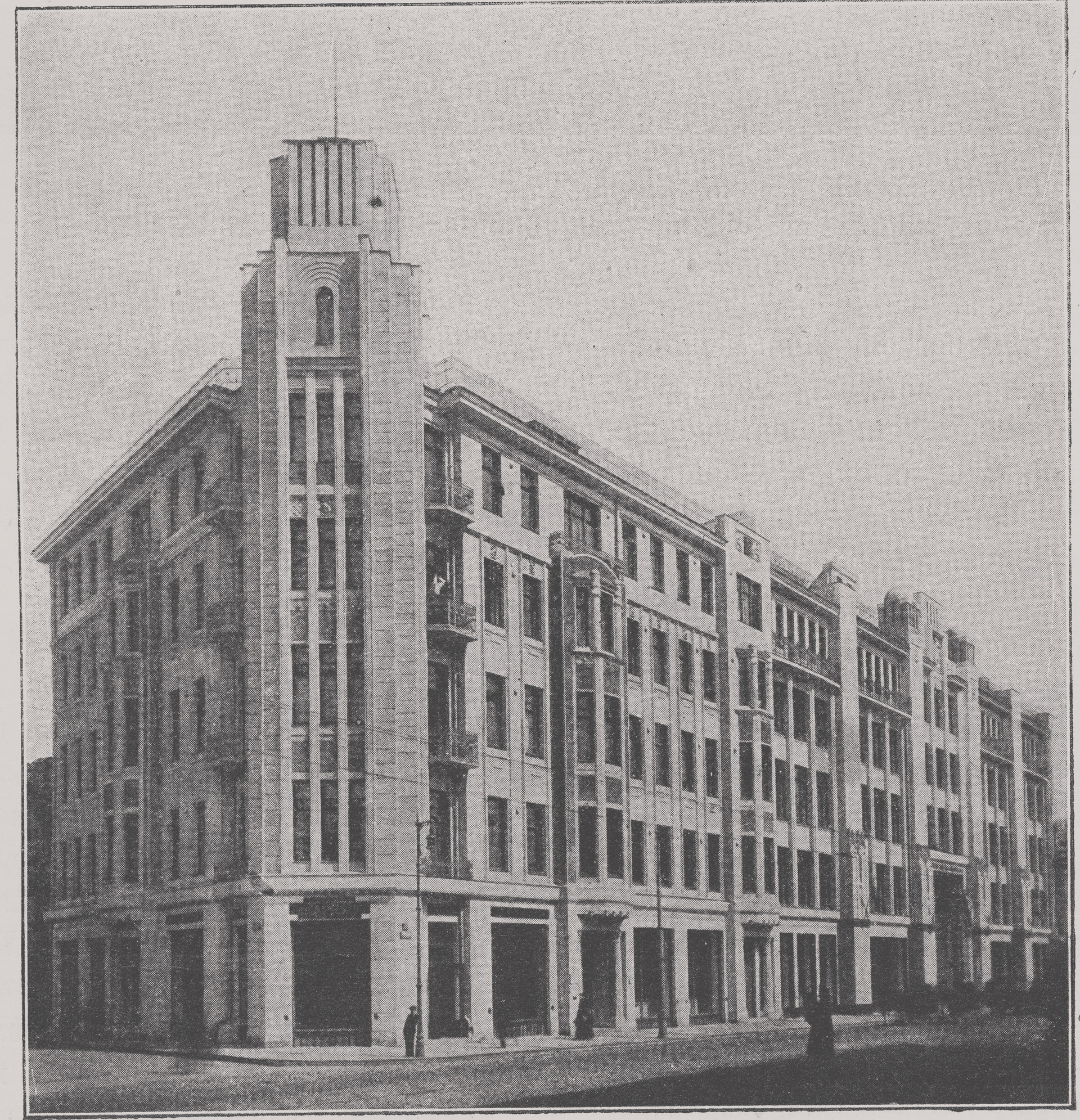
Soviet times
During Soviet times Voentorg remained the country's main military department store.
From the moment of its opening until 1994, the building belonged to the military and trade bodies of the time. In the Soviet years Voentorg was owned by the People’s Commissariat of Commerce of the USSR, the Ministry of Trade of the USSR and the Ministry of Defense of the USSR.
In the 1930s, Voentorg underwent refurbishment and reconstruction. The building’s main purpose, however, did not change, and it remained the country’s main military department store.
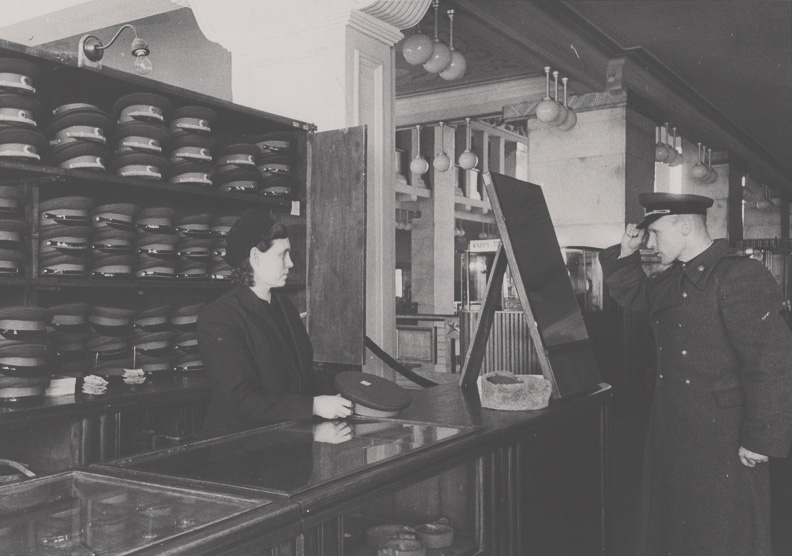
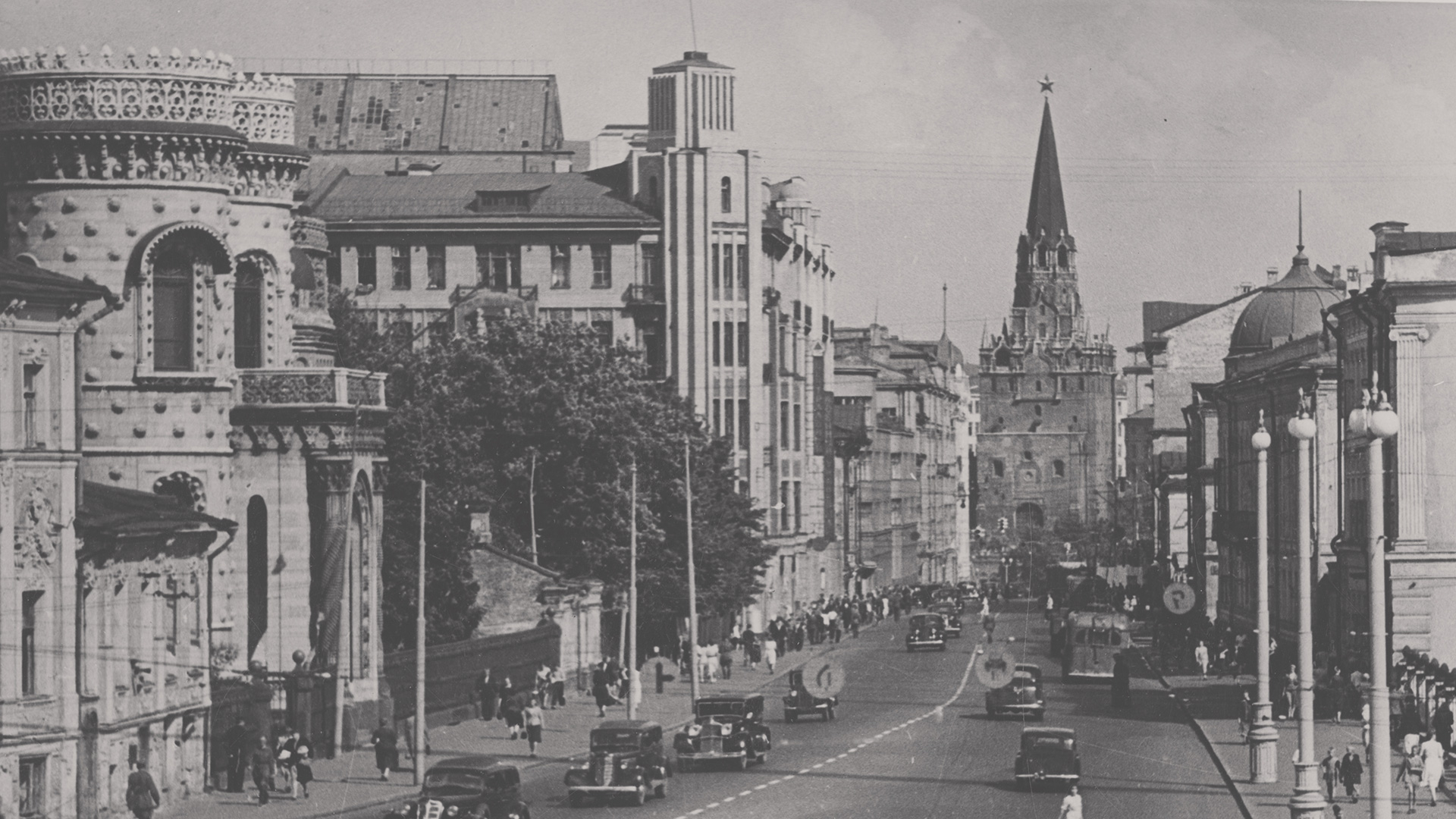
1994 - The department store closes due to the deteriorating state of the building. The Russian Government orders Voentorg privatisation.
Change of ownership
The year 1992 was marked by one of the most tragic incidents in the history of the building. Parts of the marble finish in the building collapsed and fell over the retail space. Subsequently and decision was made to close the department store due to its’ dilapidated state.
In May 1994, the Russian Government issued a decree ordering the privatization of Voentorg and its transformation into a joint stock company. According to the document, the proposal came jointly from Russia’s State Property Committee and the store’s employees, and was approved by the Russian Ministry of Defence.
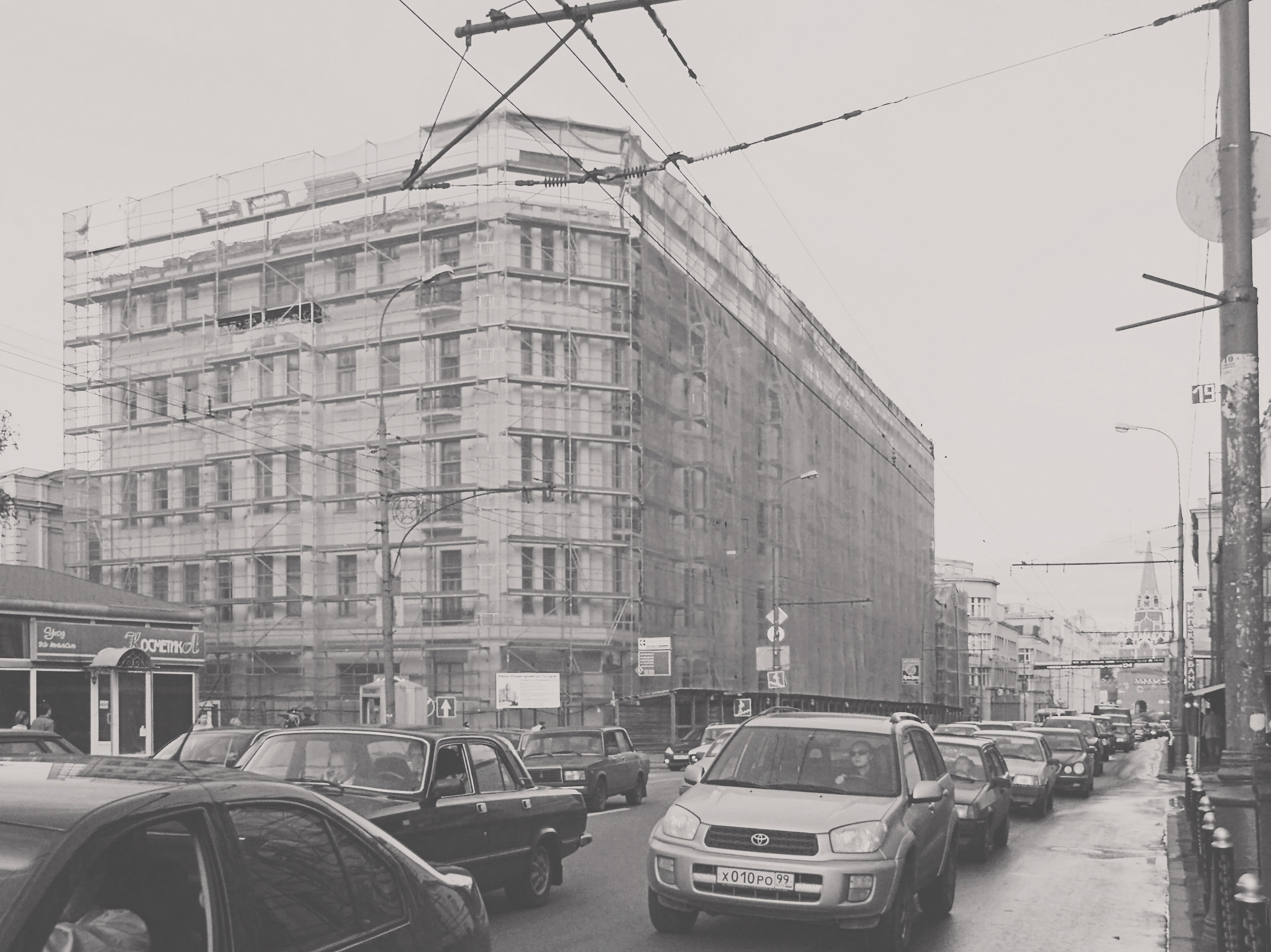

The new chapter
In 2003, it was decided to rebuild Voentorg because of its poor condition. Despite public protests, Voentorg’s new owners received approval from Moscow Mayor Yuri Luzhkov to demolish the old building.
The rebuilt Voentorg became a multi-functional business centre with an underground parking garage and opened its doors in 2008. The reconstruction included significant underground parking and made it possible to increase the overall gross floor area from 16,000 to 66,474 square meters.
The building now housed offices, restaurants, boutiques and a grocery store, and became a Class A business centre primarily focused on servicing premier office tenants.
In 2021, the global renovation was completed. The interior design of the Building and its technical equipment were significantly improved.
